One of the most visited museums in the world, you can’t miss a peek into the Vatican City on your trip to Rome. The Vatican City Museums have been welcoming visitors to their most impressive art collections since the 16th century. Many focus on getting straight to the Sistine Chapel, but there are many other pieces you won’t want to skip.
Find out everything you need to know for your visit to the Vatican City Museums!

History of The Vatican City Museums
The Vatican City Museums are an extensive collection of the Papal state, acquired throughout the centuries. The collection includes historic artifacts – primarily from the ancient Roman empire – including many works of art. They also include papal jewels and tapestries.
But how did this immense collection become a museum open to the public?
The Vatican City Museums were founded in the 16th century by the famous Pope Julius II, born Giuliano della Rovere. The Museums came into being with the purchase of a remarkable sculpture, Laocoön and His Sons. The statue was discovered in 1506, and soon caught the eye of the Vatican. One month after its discovery, the Pope placed it in their courtyard for public display.
From there, little by little the Vatican began to organize more public displays and open some of the private apartments until the public collection became the impressive 20,000-item museum you can visit today.
And the truth that might surprise you – this is only about 30% of the entire collection!
With so much to see, where should you even begin? That’s exactly what this guide is here to help you with. First, let’s discuss the major highlights of the Vatican City Museums.
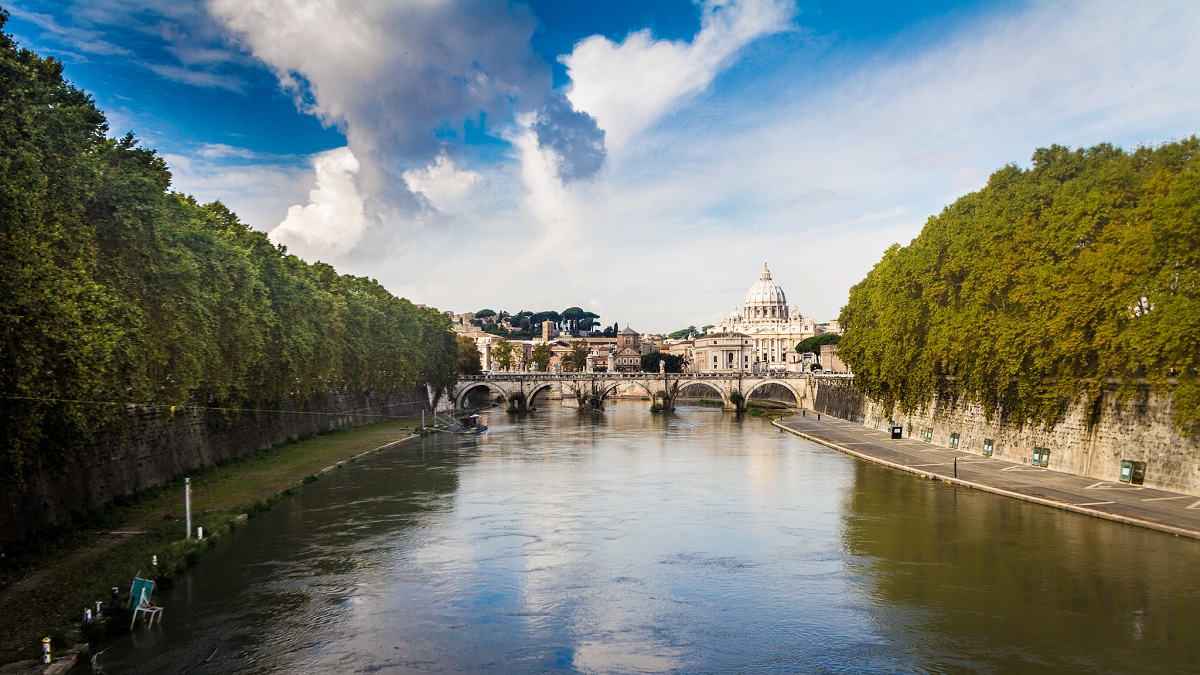
The Vatican City Museums: The Highlights
Sistine Chapel
There’s no denying it, the real star of the Vatican City Museums is the Sistine Chapel. This beautiful church is covered from ceiling to floor with elaborate paintings by Michelangelo and his students.
The Sistine Chapel shares many stories. Soak it all in, including the incredible Last Judgement behind the altar, the mixed tales of the Old Testament along with the ceiling, and the stories of St. Peter along the walls. Mixed throughout these panels are characters not only from Christian history, but also grand figures from Greek and Roman myths and history, all of whom speak of the coming of a messiah.
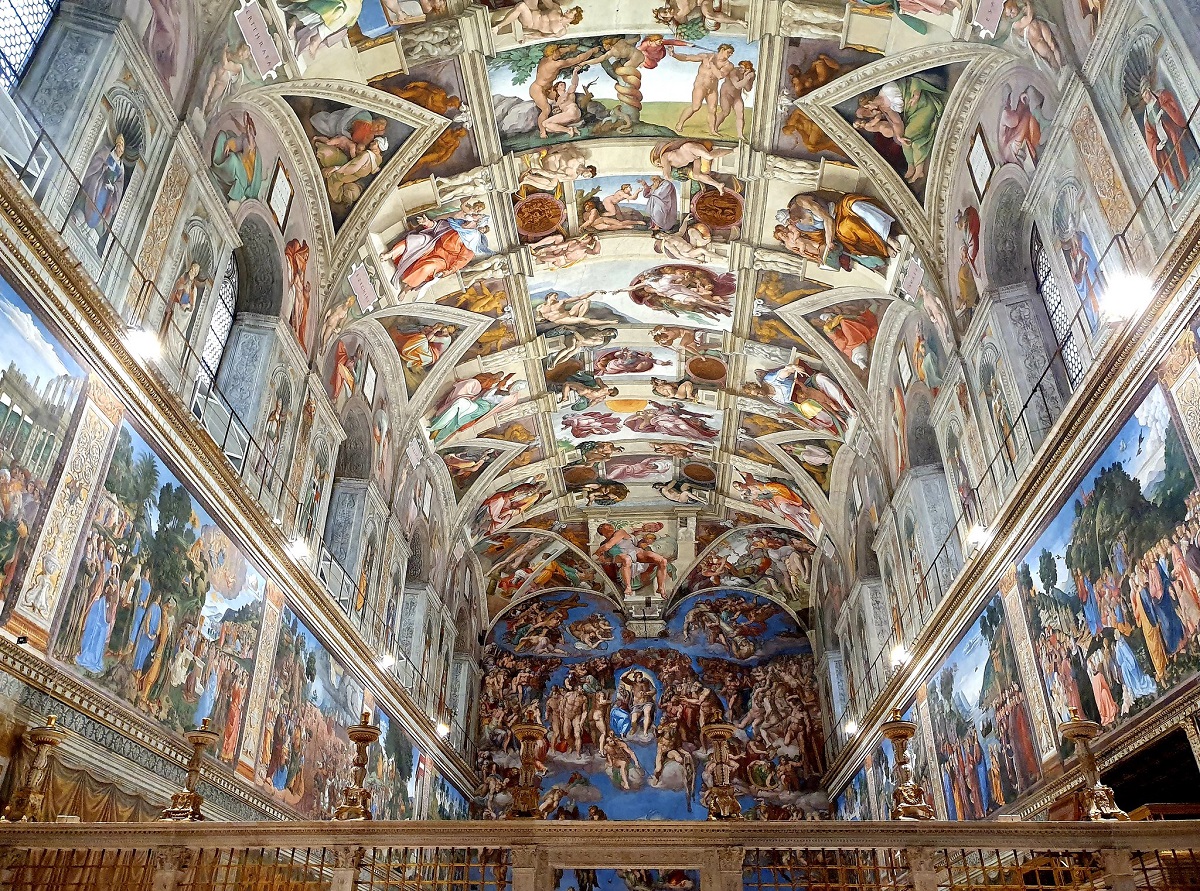
Insider’s Tip: Entire books have been written about this room alone! Before we get too carried away with the details, we’ll share one major tip: get the audio guide and take your time. Here you’ll be able to sit along the side and listen to the stories of each individual painting.
Raphael’s Rooms
The stunning Raphael’s Rooms are a set of four papal “apartments” once used as private studies and meeting halls. Each display a series of beautiful frescoes by Raphael and his workshop. The fourth room, the Sala di Constantino, was actually completed after Raphael’s death by his students.
Each room tells a story. The Sala di Costantino shares the tale of Rome’s famous first Christian Emperor, who is said to have beat his rival Maxentius with the help of Christ. The room shows scenes of his visions as well as his crowning.
Instead, the Stanza di Eliodoro is so called because of the main painting titled The Expulsion of Heliodorus from the Temple. The other main works in this room include The Mass at Bolsena, The Meeting of Pope Leo I and Attila, and The Deliverance of Saint Peter from Prison.
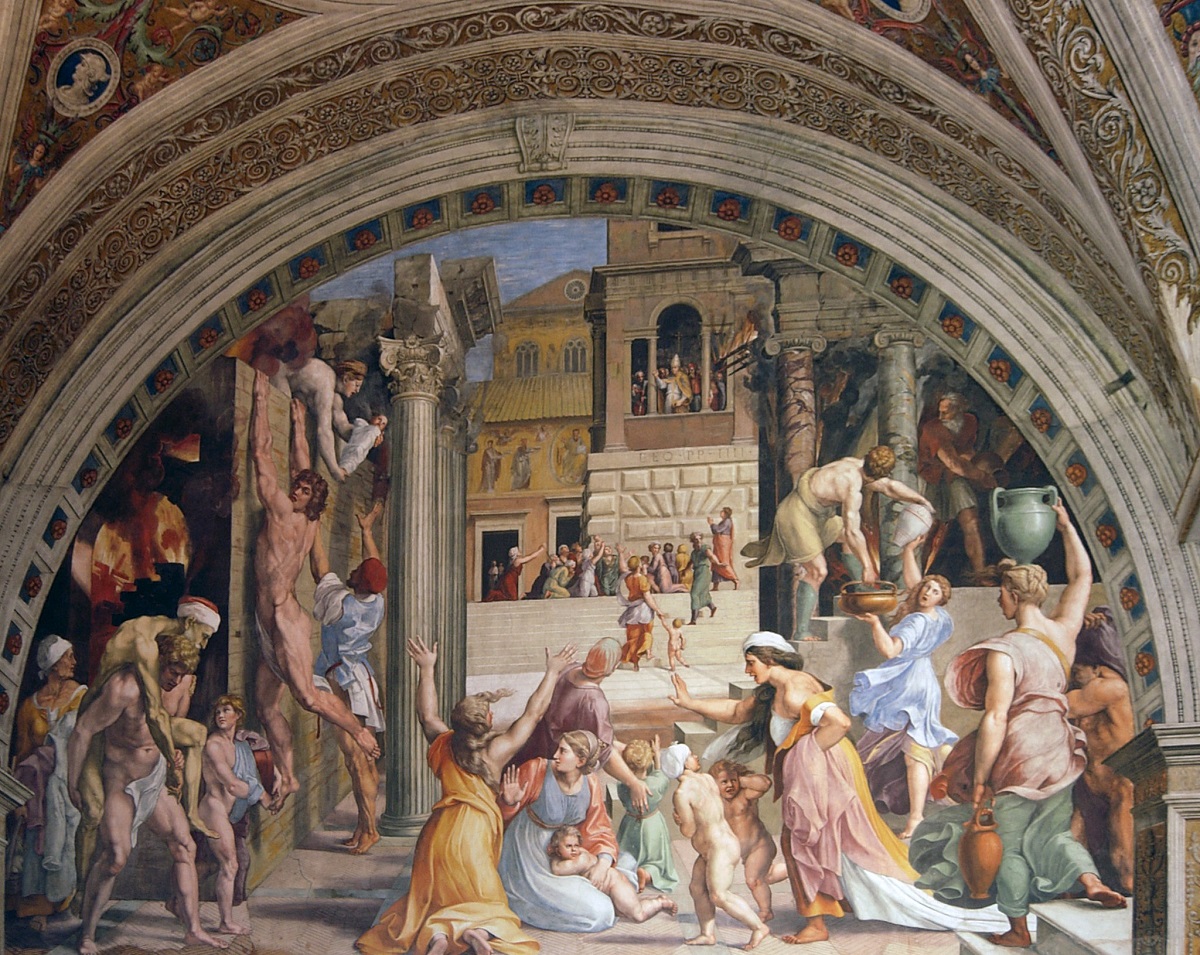
Moving to the Stanza della Segnatura, this room puts forward the concept of harmony between antiquity and Christianity. This is especially clear with the most famous fresco: The School of Athens, decorated with many well-known philosophers through the ages.
Finally, you’ll come across the Stanza dell’incendio del Borgo, named for the largest fresco depicting the destruction of a fire in the Borgo district of Rome in 847. It is said Pope Leo IV was able to contain the fire with a benediction.
Other works in the room portray events during the lives of Popes Leo III and Leo IV, including The Oath of Leo III, The Coronation of Charlemagne, and The Battle of Ostia.
Laocoön and His Sons
The statue that started it all. This stunningly intact ancient Greek marble was found in the vineyards surrounding Santa Maria Maggiore in 1506. It is assumed to have been sculpted in 40 BC.
This work represents a story from the Aeneid by Virgil at the very moment Trojans were celebrating (and distracted by the famous Trojan Horse). At that moment, the priest Laocoön – who was not excited – warned it would be their downfall. To protect the Greeks, the goddess Athena sent two serpents to kill the priest and his two sons, ensuring that their warnings were never heard.
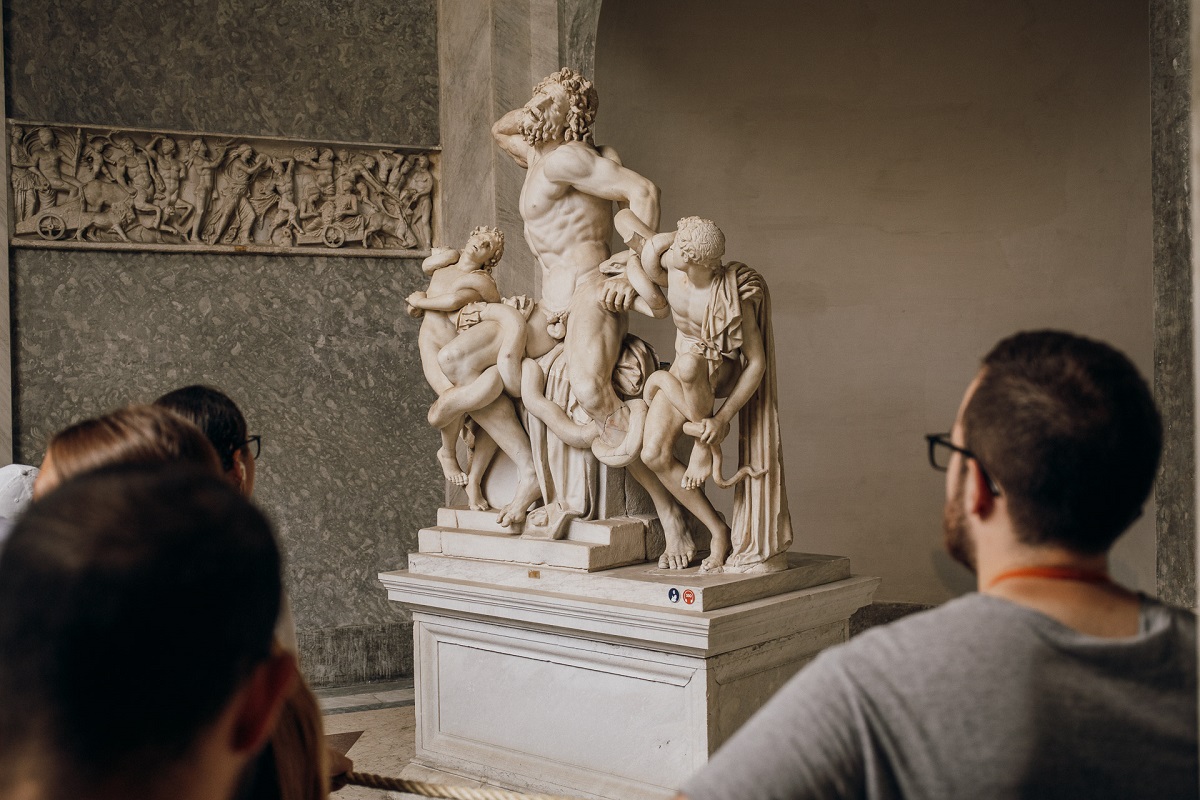
Apollo of Belvedere
This statue is another one from the Vatican’s original collections. It has been in their possession since 1508, dating to the Pope Julius II’s family collection. It is a Roman copy from a Greek Bronze, thought to be from the 2nd century AD.
This statue is well-known due to Johann Joachim Winckelmann, who stated, “of all the works of antiquity that have escaped destruction, the statue of Apollo represents the highest ideal of art.”
From the figure to the details of his face and hair, Apollo is said to be one of the most beautiful pieces in the collection.
Transfiguration – Raphael
Another masterpiece by Raphael, this was originally intended to head to a church in France. However, the Pope loved it so much that it remained in Rome. The painting served as the main altar for San Pietro in Montorio for many centuries, before it was taken by Napoleon in the 1700s, and then returned to the Vatican under the treaty of Tolentino in 1817.
Transfiguration is considered a key piece of High Renaissance art with its stunning colors and beautiful detail.
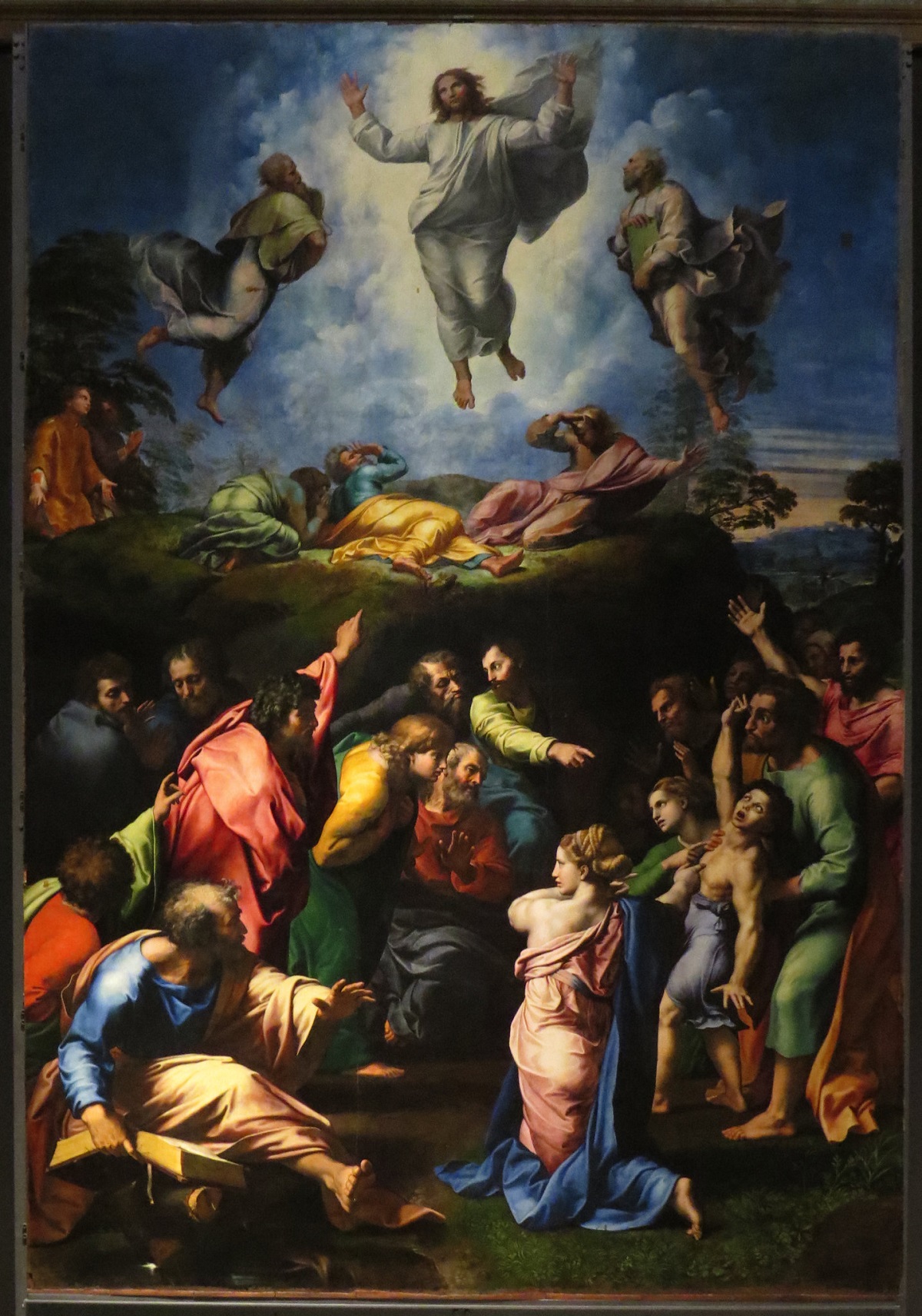
Bronze Statue Of Hercules
Ancient bronzes are often hard to come by as they were mainly melted down or subject to natural erosion. That is why this immense bronze of Hercules is so impressive to art historians. It was found near the area of Campo Dei Fiori in Rome and then gifted to the Vatican. The statue is assumed to be a depiction of Hercules from the 1-3rd centuries AD.
Now the statue itself is quite a sight to see, but what makes it even more interesting is the way it was found. It was actually ritually buried! The statue had been struck by lightning, and as that is a symbol of Zeus, the Romans decided it was meant to have a proper burial.
St Jerome in the Wilderness – Leonardo Da Vinci
This is not a complete painting, but rather a sketch by Leonardo Da Vinci. However, this unfinished work gives great insight into Da Vinci’s artistic process.
St. Jerome is shown in his typical setting – alone in the wilderness – with a lion as a companion and a rock in his hand.
This work changed hands throughout Europe several times before finally making its way to the Vatican in 1856.
The Entombment of Christ – Caravaggio
The Vatican City Museum’s art gallery wouldn’t be complete without a remarkable work by Caravaggio.
This version of The Entombment of Christ, sometimes known as The Deposition, differs from the more common image. Rather than see Christ be laid in the famous tomb, we see him lain on an anointing stone. The moment shows the agony of the three Marys, Nicodemus, and John, perfectly emphasized by Caravaggio’s distinctive dark style.
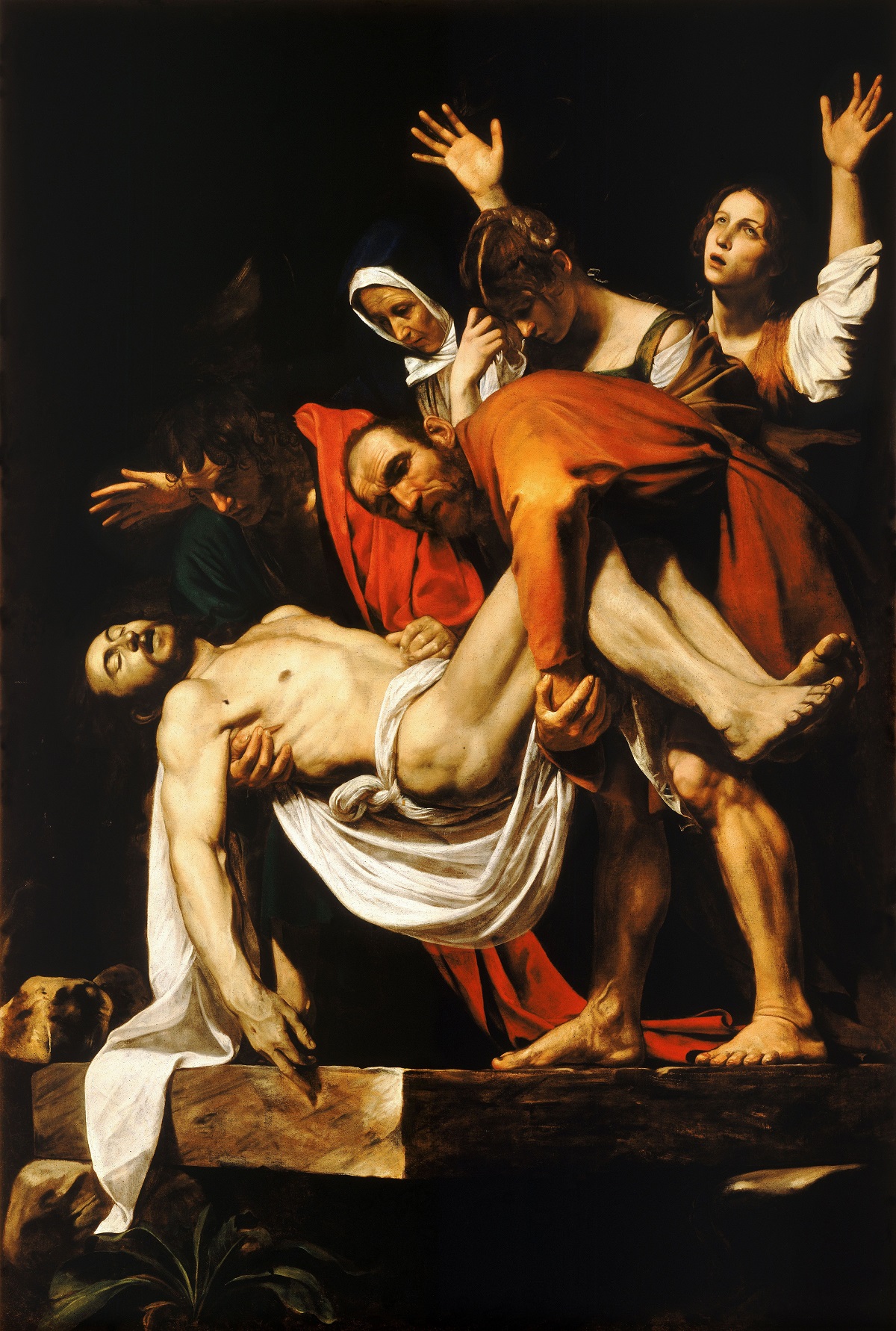
The Gallery of Maps
This curious room is probably not what you imagined when you set out to visit the Vatican City Museums. However, the Gallery of Maps is one of the most intriguing areas of the whole visit!
It is a series of mural frescoes depicting different areas of Italy, as they were when commissioned by Pope Gregory XIII. This pope commissioned the room so he could accurately study the lands in which he lived and the surrounding areas.
The Gallery of Maps helps to provide insight into the worldview at this time. It also invites modern-day visitors to learn more about the extensive history of Italy’s kingdoms and republics during the 16th century.
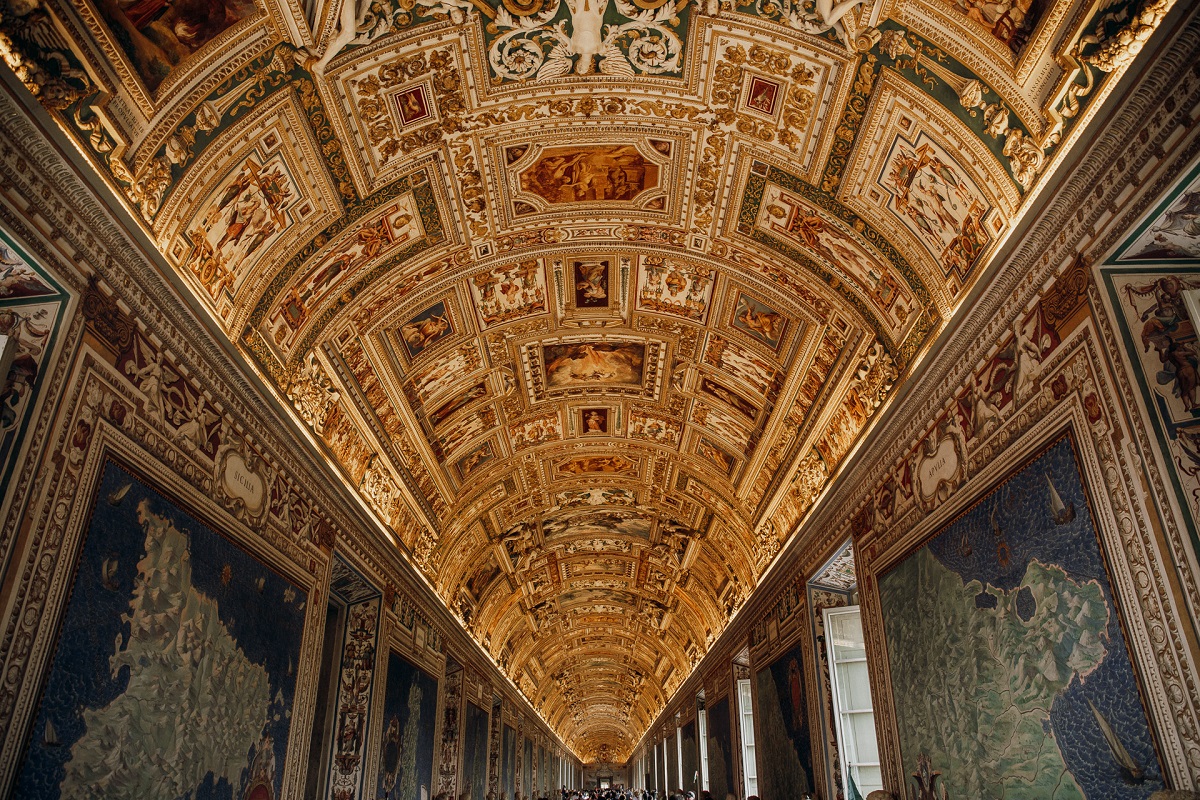
Hidden Gems at the Vatican City Museums
For art lovers, it is hard to narrow down the hidden gems of the Vatican Museum – there are just so many great works in this collection! But, to give you an idea, we’ve chosen a few of our absolute favorites.
Apoxyomenos
A Roman copy from 50 AD, this sculpture is thought to have been based on a Greek Bronze from 320 BC. It shows an athlete cleaning himself with oil and a curved scraper known as a strigil. It is an interesting work for the simple moment of the sculpture, as well as the movement of his arm and foot being captured.
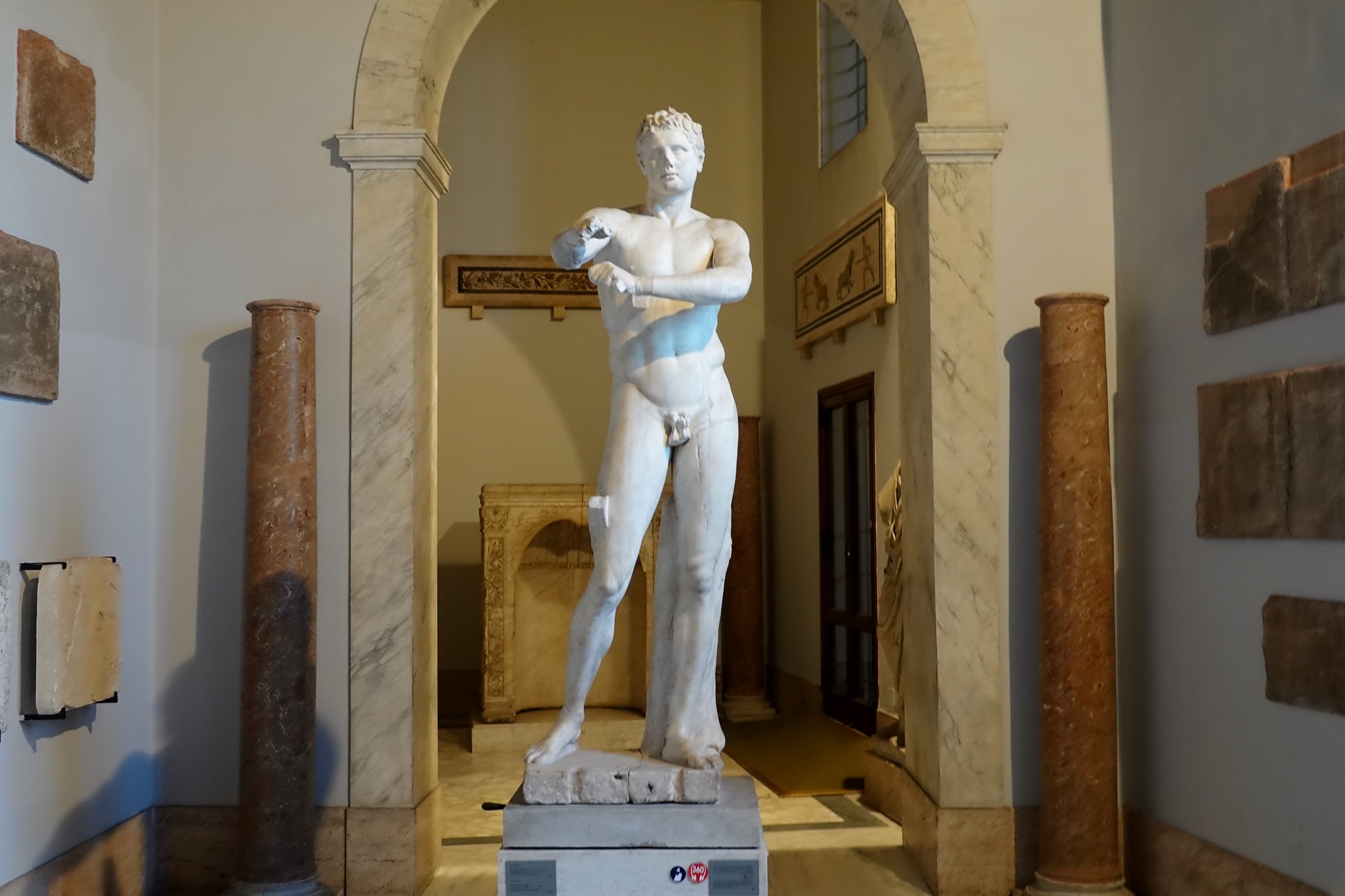
Crucifixion Of Saint Peter – Guido Reni
Guido Reni is an artist that often flies below the radar, though his work is truly something to behold. He was heavily influenced by Caravaggio, showing deep contrast and dark colors. Yet he brings his own touch to the style.
Reni was a master at defining the muscles in his subject with intricate detail. It was also telling of his style not to idealize the human body. Thus, we see a true form instead of a saintly figure.
This painting in particular was his first big success after coming to Rome. It was commissioned by the Cardinal Pietro Aldobrandini for S. Paolo alle Tre Fontane, and was one of the paintings sent to Paris under Napoleon. Finally, it was returned to the Vatican City Museums in 1819.
The Crowning of the Virgin – Raphael
This is a unique painting with a focus on the Virgin Mary, rather than the life of Christ. It is also another excellent example of Raphael’s distinctive style.
The painting itself actually depicts two scenes. At the bottom of the piece, you can see the Virgin’s grave with the Apostles around her. However, we do not see the Virgin herself, but rather flowers representing her ascent into heaven. The Apostles look above at the scene, where she is being crowned in heaven. At the top of the piece, we see the Virgin Mary being crowned by her son Jesus.
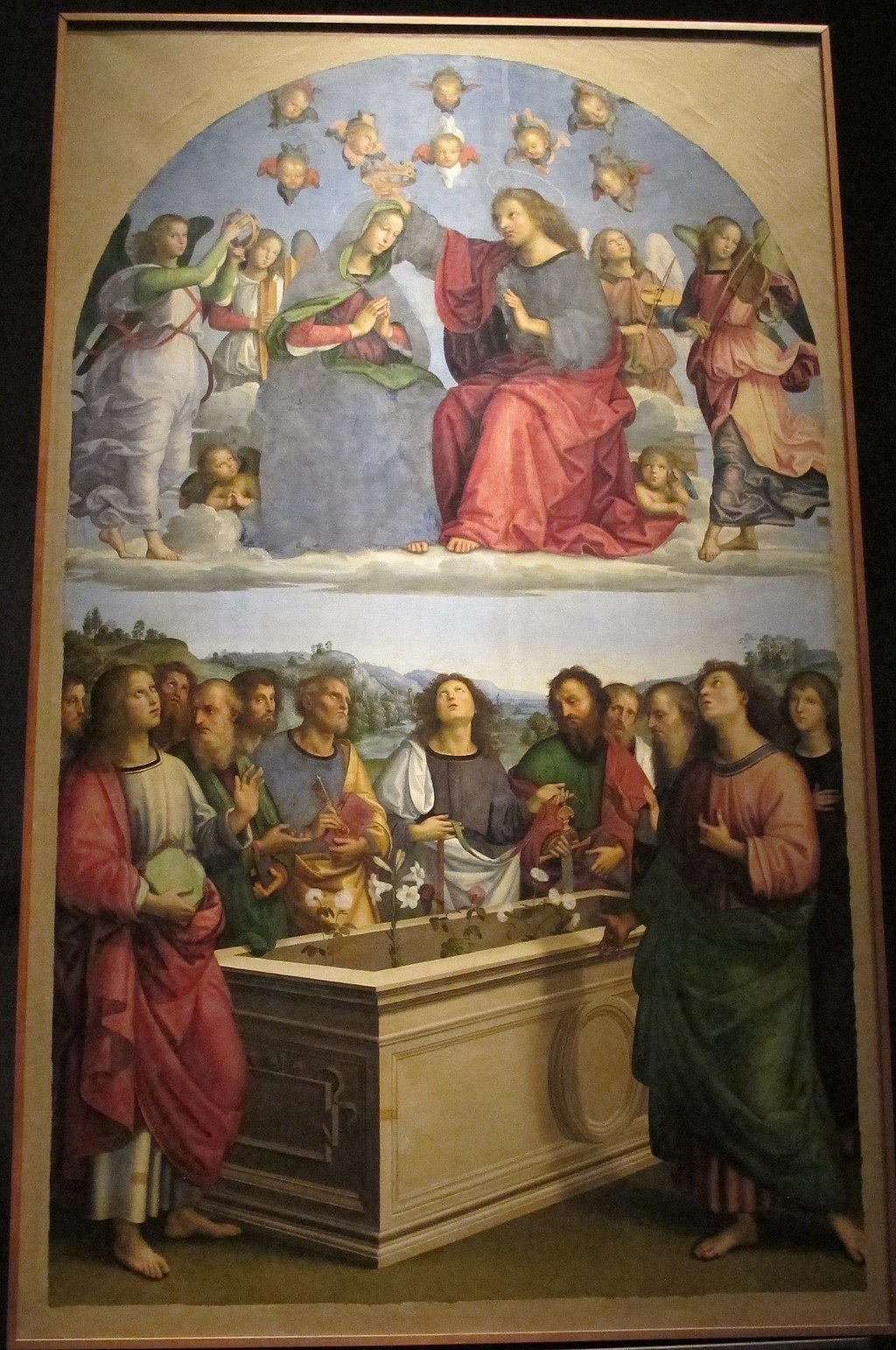
The Braschi Antinous
A large sculpture of Antinous, the famous boyfriend of Emperor Hadrian. You’ll see a few pieces showing his face throughout the collection. Their story was a curious one – while many Roman Emperors took lovers of all genders, it was mainly behind closed doors. Hadrian, however, brought Antinous to the forefront, having him by his side and dedicating many works to him.
Unfortunately, Antinous died along the Nile under mysterious circumstances (many said he was murdered). Immediately after, Hadrian took steps to deify Antinous. He became Osiris-Antinous, mixing the worship of Egyptian old gods and Roman traditions. This statue shows Antinous in a god-like form, with a crown of leaves and berries.
The Belvedere Torso
This piece is said to have been of great inspiration to Michelangelo when he painted his figures in the Sistine Chapel. You can see this by noticing how many figures sit with the same curved torso on the Sistine Chapel ceiling. This portion of a statue was found in the late 15th century, though is presumed to be from the mid-2nd century.
It’s hard to tell what story the sculpture was telling, but many believe it to be the mythical Ajax after losing the competition with Odysseus in the tale of the Iliad. Interestingly, it is signed by an Athenian Sculptor named Apollonios. It was most likely a marble copy of a Greek Bronze.
While today it looks simple, in the Renaissance this find was an impressive study of the human body, and was very detailed for the time. Artists were able to study the twist and wrinkles of the muscles to better train their own depictions of the body.

A Quick Self-Guided Tour of the Vatican City Museums
You should block out at least four hours to visit the Vatican City Museums in their entirety. And, if you know you’ll want to spend time listening to the audio guide in the Sistine Chapel and Raphael’s Rooms, you should include even more time.
Even if you decide to rush through to see only the highlights that interest you, a visit can easily take two hours. It also may take more time simply based on how busy the halls are with visitors.
There is a shorter itinerary you can follow to catch the highlights and get the most out of a short visit.After entering, head to the left, the first area you’ll find is the courtyard housing the Apollo Belvedere and the Laocoön sculptures. Upon entering, you’ll take a left up the stairs to start the visit in the Egyptian portion of the museums. From here, take as long as you like, you can follow the signs for the short itinerary to the Sistine Chapel.
However, keep in mind that by taking the short itinerary, you will miss the elegant Rotunda Room, with the impressive bronze of Hercules and sculpture of Antinous. This is after the Egyptian Collection, in the Museo Pio Clementino.
If you still decide to skip ahead, take the stairs again, turning left down a long hall that leads almost straight to the Sistine Chapel.
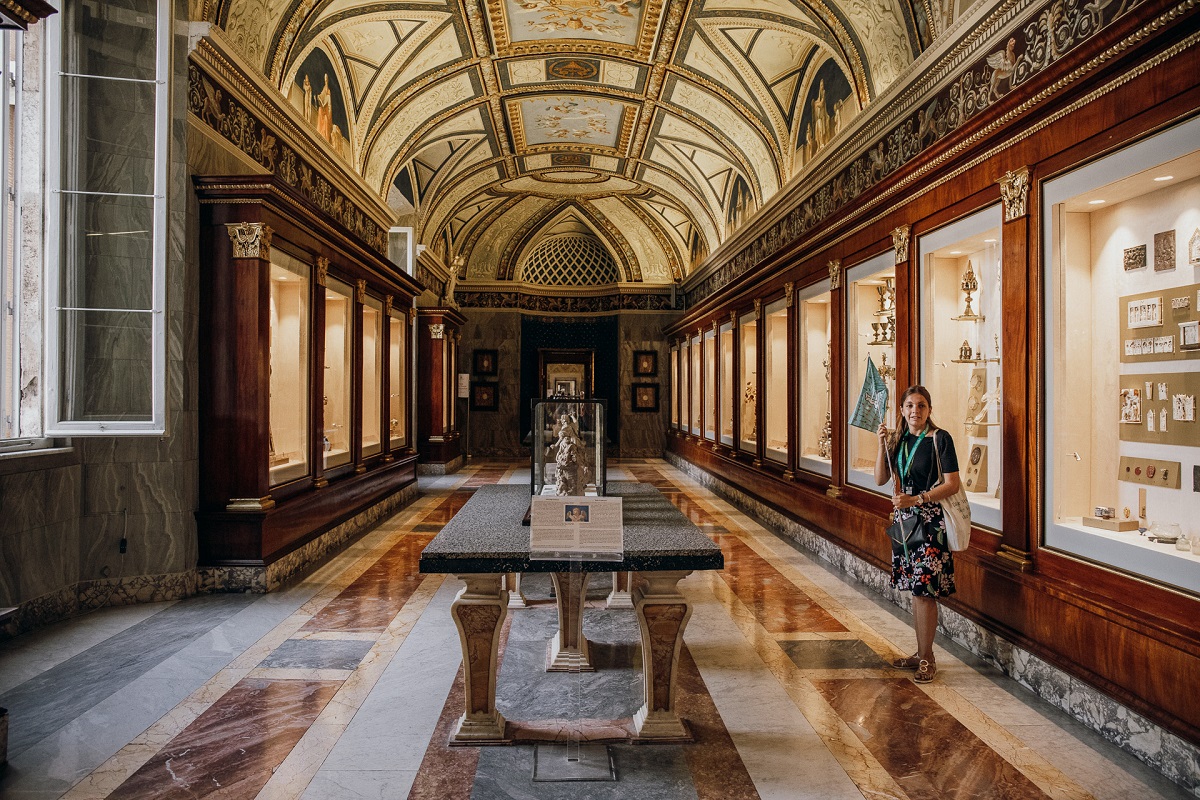
During this portion, you will walk through the Galleria dei Candelabri, Galleria degli Arazzi, the Hall of Maps, before getting to another fork in the path. Here you’ll have to choose if you want to go directly to the Sistine Chapel or see Raphael’s Rooms beforehand.
Choosing Raphael’s Rooms means you’ll also walk through the Borgia Appartments and the Contemporary art collection. Then, finally you’ll reach the Sistine Chapel!
After enjoying the Sistine Chapel, there is only one exit. However, you can feel free to take as long as you’d like to work through it.
Important piece of advice: before exiting, don’t miss another left turn just before to visit the Pinacoteca, the Painting Gallery. Here you’ll find many Vatican Museum gems.
While bathrooms are found throughout this itinerary, the bar and cafeteria area are only accessible in the first courtyard right after the entrance, and the Pinecone Courtyard shortly after. Once you begin a visit to the Egyptian section, you won’t be able to circle back until after the Sistine Chapel visit (but before the Pinacoteca!)
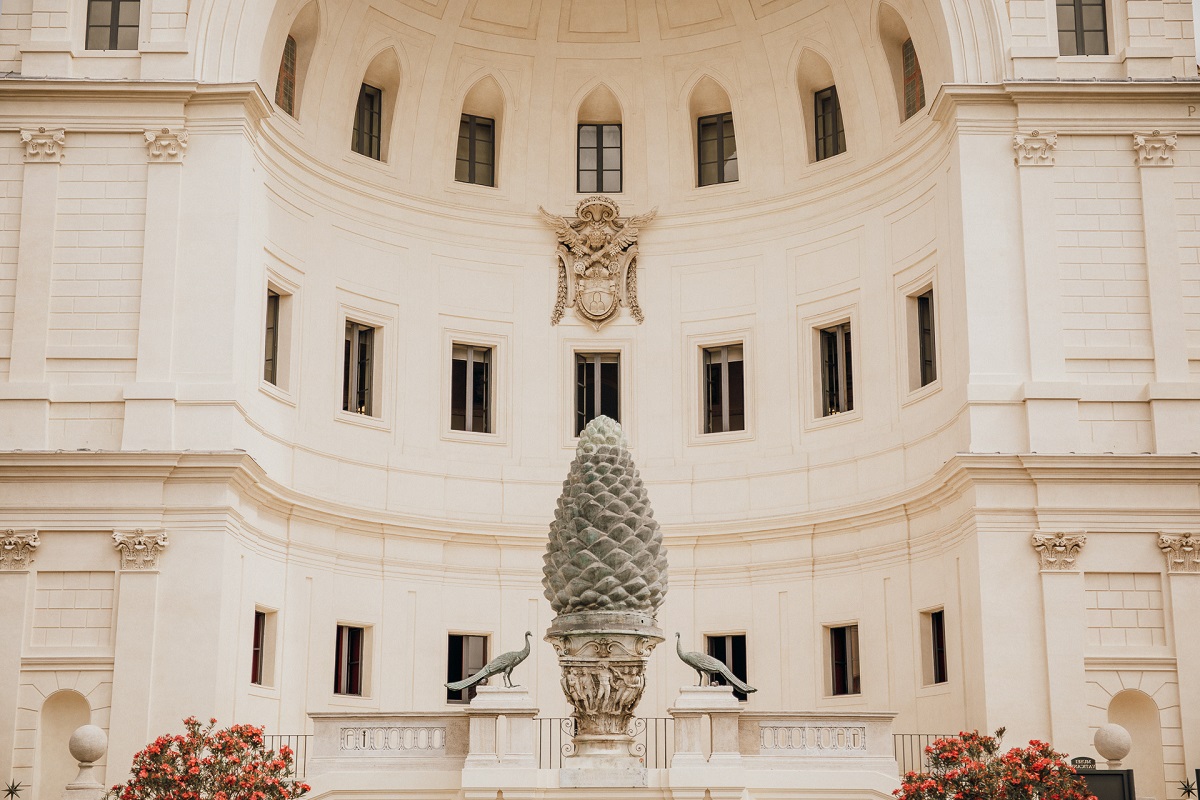
Insider’s Tip: Our favorite foodie way to enjoy the Pinecone Courtyard is with breakfast!
The Vatican City Museums: Practical Info
Planning A Visit to the Vatican City Museums
You should plan to book well in advance. This is especially true during the summer months, as tickets sell fast. Apart from the normal entrance ticket, you can also find some special deals including breakfast or lunch at the Vatican, or even opening the Sistine Chapel first thing in the morning.
You might have already walked by the Vatican City Museums and seen a long winding line around the Vatican’s walls. Don’t worry, you don’t have to wait here! For visitors who have bought their tickets online, through the Vatican City Museums directly, you can go to the entrance, where there is a separate entrance.
Buying Tickets for the Vatican City Museums
Tickets cost 17€ and can be booked directly. There is a reduced ticket for 8€ that is available for visitors under 18 or for university students who hold an International Student Card.
If you’d like to discover the Pontifical Gardens or the Vatican’s summer villas, you can also book these directly on the Vatican Museum’s site.
Opening Hours at the Vatican City Museums
The Vatican City Museums are open from Monday to Saturday, 9 am to 6 pm. However, in the summer (April 22 to October 29), they extend opening hours on Fridays and Saturdays to 10:30 pm.
The Museums close on observed holidays including January 1 and 6; February 11; March 19; April 18; June 29; August 15; November 1, and the 8th and 26th of December. As the Catholic calendar may change yearly, you should check for this year’s dates.
Free Entry to the Vatican City Museums
If you are lucky enough to be in Rome on the last Sunday of the month, know that admission to the Vatican City Museums is free! However, it is first come, first served so if you hope to get in, aim to be early in line.
What to Wear to the Vatican City Museums
Finally, when planning your visit, remember that the Sistine Chapel and St. Peter’s Basilica are holy sites and do require proper attire. Be sure to cover up between your knees and shoulders, bring a scarf along to tie over your shoulders if necessary!
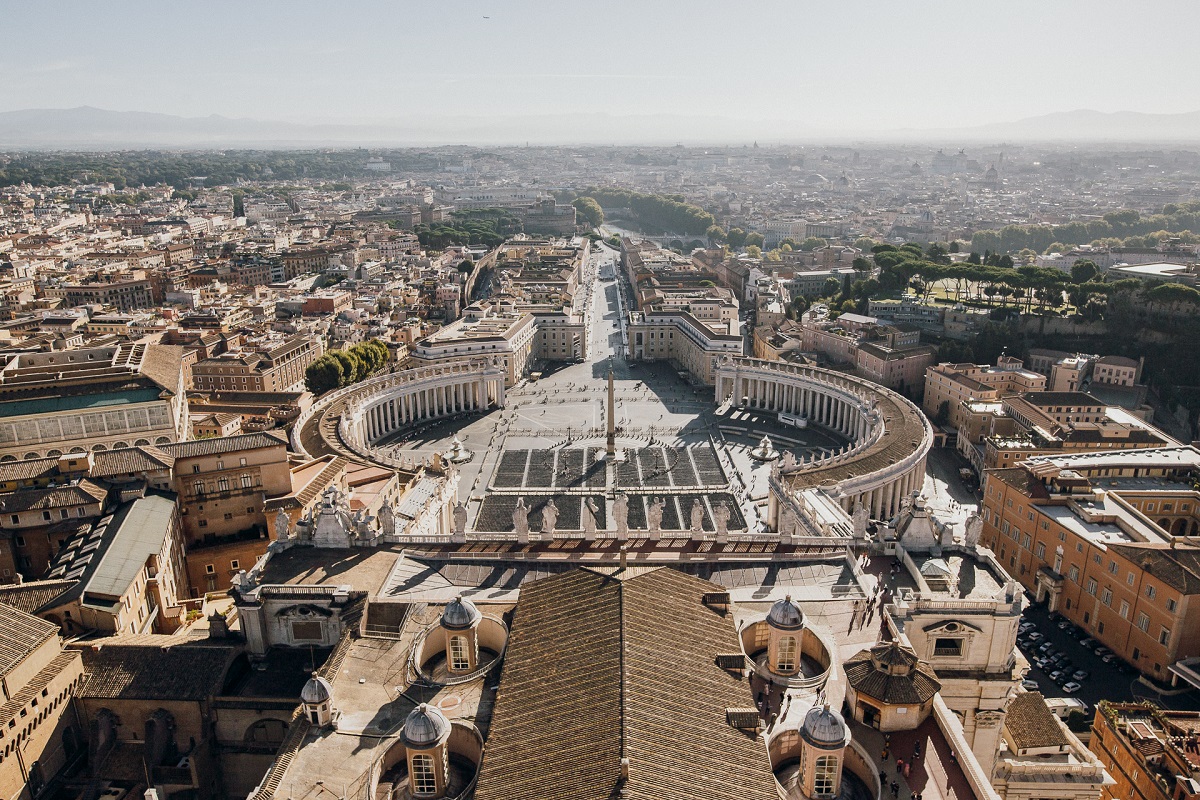
Vatican City Museums FAQ
How much does a ticket cost?
A normal entrance ticket to the Vatican Museums costs 17€. However, if you are under 18 or a student in possession of an International Student Card, you are eligible for a discount. The discounted tickets are 8€.
Where can I book a ticket?
The best place to book your tickets is directly on the Vatican City Museums website. This is where you will find the original tickets for the true price.
Do I need a guide?
If you are looking to better understand the works, you may want to consider a guide. The museum itself has very little information to read on site.
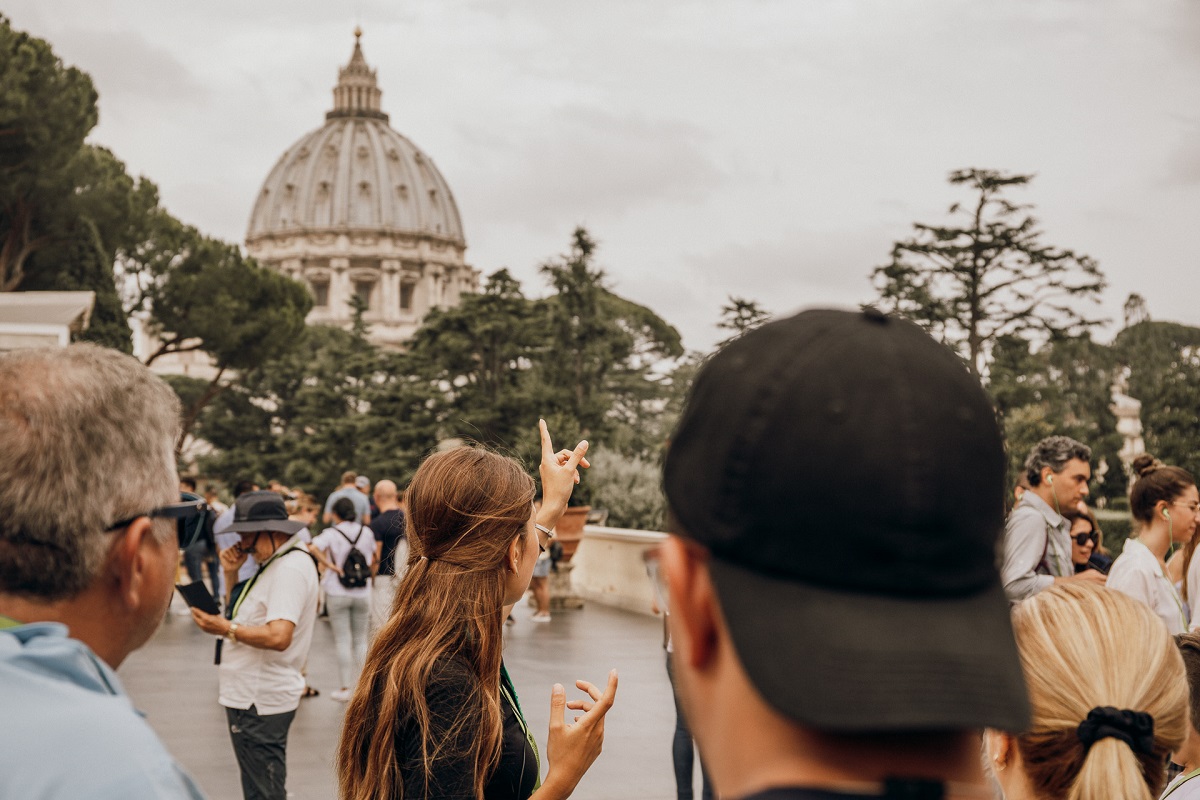
There are also audio guide available at the entrance. You can also choose to book with an official Museum guide when booking your ticket. We recommend the audio guide so you can explore at your own pace.There are also free audio guides from the company IZI, which can be accessed on your phone.
Can I bring my pet?
No, animals can not enter the Vatican City Museums or St. Peters Basilica.
Is there somewhere to eat in the Vatican City Museum?
Yes, there is a cafeteria and bar within the main courtyard just after the entrance. There is also a smaller bar in the Pinecone Courtyard.
How long will a visit take?
If you were to truly admire every work, a visit could even take all day!
If you only want to catch the main highlights, it is doable in about two hours. Keep in mind that there are almost seven kilometers (over four miles!) of halls. Because of this, even simply walking through the museums makes for a long visit. Overall, we recommend blocking off about four hours to visit everything.

An Italy local for nearly 10 years, Evelyn has traveled to nearly every region getting overly excited about cute doors and nonni cafes. She’s an archaeology and art history major who fell in love with Italian wine, getting her Sommelier and Italian Wine Scholar certifications. She’s transformed her passion for La Bel Paese into a travel planning and relocation consultancy with Colline Alle Montagne. You’ll find her on Instagram @collinemontagne, always sipping a glass of wine and sharing the authentic life in Italy.